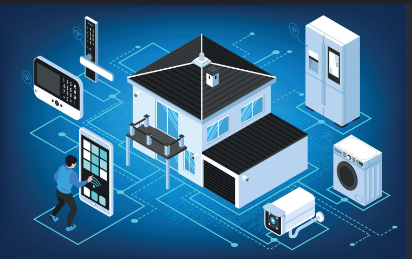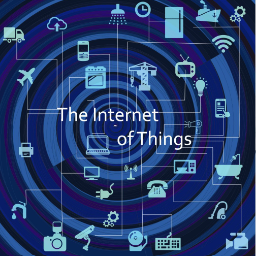
Introduction
The Internet of Things (IoT) refers to the network of interconnected devices that communicate and exchange data through the internet. These devices, ranging from everyday household items to sophisticated industrial tools, are embedded with sensors, software, and other technologies that enable them to collect and share data. IoT represents a significant technological advancement, transforming industries, enhancing efficiencies, and creating new opportunities for innovation.
Innovation in IoT
1. Smart Homes and Consumer Devices
- Automation and Control: IoT devices like smart thermostats, lights, and security systems allow users to automate and control their home environments remotely. Examples include Nest thermostats and Philips Hue lighting.
- Connected Appliances: Smart refrigerators, washing machines, and other appliances provide convenience by offering features such as inventory management, remote operation, and energy consumption monitoring.
2. Healthcare
- Remote Monitoring: IoT-enabled medical devices can monitor patients’ vital signs in real-time, facilitating remote healthcare and reducing the need for frequent hospital visits. Examples include wearable fitness trackers and glucose monitors.
- Smart Medical Equipment: Devices such as smart inhalers and connected contact lenses help in managing chronic conditions by providing timely data to healthcare providers.
3. Industrial IoT (IIoT)
- Predictive Maintenance: IoT sensors in industrial machinery can predict failures before they occur, reducing downtime and maintenance costs. Examples include sensors in manufacturing equipment and power grids.
- Supply Chain Management: IoT enhances supply chain transparency and efficiency through real-time tracking of goods and inventory management. Technologies like RFID and GPS are commonly used.
4. Smart Cities
- Traffic Management: IoT technologies improve traffic flow and reduce congestion through real-time data collection and analysis. Examples include smart traffic lights and connected public transportation systems.
- Environmental Monitoring: IoT devices monitor air and water quality, helping cities to manage pollution and ensure public health. Sensors for air quality and noise pollution are key implementations.
5. Agriculture
- Precision Farming: IoT devices collect data on soil moisture, weather conditions, and crop health, enabling farmers to optimize irrigation, fertilisation, and pest control. Examples include smart irrigation systems and drones for crop monitoring.
Advantages of IoT
1. Enhanced Efficiency and Productivity
- Automation: IoT enables automation of routine tasks, reducing the need for human intervention and increasing productivity. Automated manufacturing lines and smart home systems are prime examples.
- Data-Driven Decisions: IoT devices provide real-time data, facilitating informed decision-making and optimizing operations across various sectors.
2. Cost Savings
- Reduced Operational Costs: Predictive maintenance and efficient resource management lead to significant cost savings in industries such as manufacturing and energy.
- Energy Efficiency: Smart grids and IoT-enabled appliances help in optimising energy consumption, resulting in lower utility bills and reduced environmental impact.
3. Improved Quality of Life
- Convenience and Comfort: Smart home devices enhance user convenience and comfort through automation and remote control features.
- Health and Safety: IoT healthcare devices improve patient outcomes through continuous monitoring and timely intervention. Smart city initiatives enhance public safety and environmental quality.
4. Innovation and New Business Opportunities
- New Products and Services: IoT fosters innovation by enabling the development of new products and services, such as connected vehicles and smart home systems.
- Business Models: IoT enables new business models, such as subscription-based services and data-driven offerings, creating additional revenue streams.
5. Better Resource Management
- Sustainable Practices: IoT promotes sustainability by optimizing resource usage in agriculture, manufacturing, and energy sectors. Smart irrigation systems and energy-efficient buildings are examples.
- Environmental Monitoring: IoT devices help in monitoring and managing environmental resources, contributing to conservation efforts.
Challenges and Considerations
1. Security and Privacy
- Data Security: The proliferation of connected devices increases the risk of cyber-attacks and data breaches. Ensuring robust security measures is crucial.
- Privacy Concerns: The vast amount of data collected by IoT devices raises concerns about user privacy. Regulations and best practices are needed to protect personal information.
2. Interoperability
- Standards and Protocols: The lack of universal standards for IoT devices can lead to compatibility issues. Developing interoperable solutions is essential for seamless integration.
3. Infrastructure and Scalability
- Network Requirements: IoT devices require reliable and scalable network infrastructure to handle the data traffic. Investment in advanced network technologies like 5G is necessary.
4. Cost and Complexity
- Initial Investment: Implementing IoT solutions can be costly, particularly for small and medium-sized enterprises. Addressing cost barriers is important for wider adoption.
- Technical Complexity: The complexity of IoT systems can pose challenges in terms of deployment and maintenance. Simplifying solutions and providing adequate support is vital.
Conclusion
The Internet of Things is a transformative technology that offers numerous benefits across various sectors, enhancing efficiency, driving innovation, and improving quality of life. While there are challenges to address, such as security, interoperability, and infrastructure needs, the potential advantages of IoT far outweigh these obstacles. By fostering collaboration among stakeholders, developing robust frameworks, and investing in technological advancements, the full potential of IoT can be realised, leading to a smarter, more connected world.
